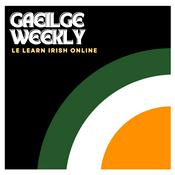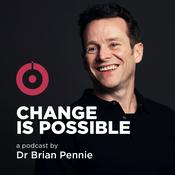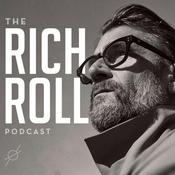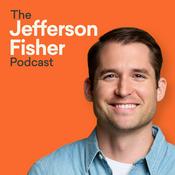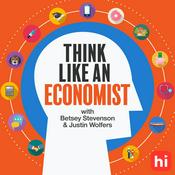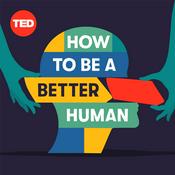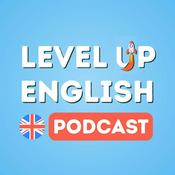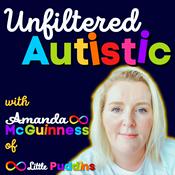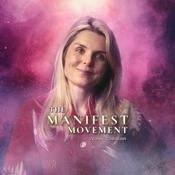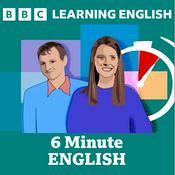Available Episodes
5 of 150
- The value of animal culturesNot long ago culture was considered rare in nature, maybe even uniquely human. But that's changed. We now know that the tree of life is buzzing with culture—and not just on a few lonely branches. Creatures great and small learn songs, migration routes, and feeding techniques from each other. Many species build up reservoirs of knowledge over generations. This has profound implications, not just for our understanding of the natural world, but also for our efforts to protect it. My guest today is Dr. Philippa Brakes. Philippa is an Honorary Lecturer at the University of Exeter, with one foot in science and another in conservation. She's both a behavioral ecologist, focusing on whales and dolphins, and a leading voice—for more than a decade now—urging conservationists to take animal cultures seriously. Here, Philippa and I talk about how researchers define culture and social learning in animals. We tour the mounting evidence for culture across species—in birds, in apes, in fish, possibly even in insects. We discuss the methods that scientists use to infer that behaviors are socially learned. We consider how animal culture complicates the conservation enterprise. We also discuss the idea that animal cultures have intrinsic value—not value for us humans, not value that can be easily quantified, but value for the animals themselves. Along the way Philippa and I talk about the notion of "cultural rescue"; indigenous understandings of animal culture; cases where social learning is maladaptive; human-animal mutualism; fashion trends; the idea of conserving "cultural capacity"; elephant matriarchs and other "keystone individuals"; golden lion tamarins, herring, and regent honey-eaters; and the question of why some orcas wear salmon as hats. Alright friends, this topic has been on our wish list for a while now. Hope you enjoy it! Notes 2:30 – For academic articles by Dr. Brakes and colleagues on the importance of animal culture for conservation, see here, here, and here. The last of these is the introduction to a recent special issue on the topic. Many of the topics discussed in this episode are also covered in this issue. 3:30 – The case of the golden lion tamarins is discussed here. 5:00 – For more about the Convention on the Conservation of Migratory Species (or CMS) of Wild Animals, see here. 9:00 – For a classic paper on social learning in animals, see here. For a relatively recent, detailed overview of animal culture, see here. For a short primer on animal culture, see here. 10:00 – For discussion of the riskiness of long-line depredation, see here. 12:00 – For a study by Dr. Sonja Wild and colleagues on bottlenose dolphin declines following a heat wave—and how these declines may have been buffered by tool-using traditions—see here. 15:00 – For the review of cetacean foraging tactics by Dr. Taylor Hersh and colleagues, see here. 17:00 – For a primer on honeyguides (and their mutualism with honey hunters), see here. 20:00 – For a recent review of culture and social learning in birds, see here. For a review of conservation of avian song culture, see here. 25:00 – For a review of (the conservation of) chimpanzee culture, see here. 28:00 – For the initial report of chimpanzees putting grass in their ears, see here. For more on the phenomenon of orcas wearing salmon hats, see here. 33:00 – For a recent review of culture and social learning in fish, see here. 35:00 – For the recent study on "collective memory loss" in herring, see here. 39:00 – For more on the possibility of social learning in insects, see here. For a video of the puzzle box experiment in bees, see here. 44:00 – For a recent review of the "methodological toolkit" used by researchers in the study of social learning in animals, see here. 47:00 – For the study using network-based diffusion analysis to understand the spread of feeding strategies in humpback whales, see here. 49:00 – For the original 2000 study on the spread of humpback whale song, see here. For a more recent study of "revolutions" in whale song, see here. 53:00 – For an example of work looking at changes in whale song as a result of human noise, see here. 55:00 – For more on the idea of "keystone individuals" in the case of elephants, see here. For more on menopause and the so-called grandmother hypothesis, see our earlier episode with Alison Gopnik. 1:05:00 – A recent editorial calling for the protection of animal cultural heritage under UNESCO. Recommendations The Cultural Lives of Whales and Dolphins, by Hal Whitehead and Luke Rendell Animal Social Complexity, edited by Frans de Waal and Peter Tyack The Evolution of Cetacean Societies, by Darren P. Croft et al. The Edge of Sentience, by Jonathan Birch (featured on an earlier episode) Many Minds is a project of the Diverse Intelligences Summer Institute, which is made possible by a generous grant from the John Templeton Foundation to Indiana University. The show is hosted and produced by Kensy Cooperrider, with help from Assistant Producer Urte Laukaityte and with creative support from DISI Directors Erica Cartmill and Jacob Foster. Our artwork is by Ben Oldroyd. Subscribe to Many Minds on Apple, Stitcher, Spotify, Pocket Casts, Google Play, or wherever you listen to podcasts. You can also now subscribe to the Many Minds newsletter here! We welcome your comments, questions, and suggestions. Feel free to email us at: [email protected]. For updates about the show, visit our website or follow us on Bluesky (@manymindspod.bsky.social).--------1:12:00
- What is memory for?Everyone loves a good evolutionary puzzle. Why do we have appendices? Why do we dream? Why do we blush? At first glance, memory would not seem to be in this category. It's clearly useful to remember stuff, after all—to know where to find food, to remember your mistakes so you don't repeat them, to recall who's friendly and who's fierce. In fact, though, certain aspects of memory—when you hold them up to the light—turn out to be quite puzzling indeed. My guests today are Dr. Ali Boyle and Dr. Johannes Mahr. Ali is a philosopher at the London School of Economics (LSE); Johannes is a philosopher at York University, in Toronto. Both have written extensively about the functions of memory, and, in particular, about the functions of episodic memory—that capacity for calling up specific events and experiences from our own lives. Here, Ali, Johannes and I lay out the textbook taxonomy of memory, and discuss how episodic memory has drawn the lion's share of philosophical interest. We pick apart the relationship between episodic memory and another major type of long-term memory, semantic memory. We sketch a range of different accounts of the evolved functions of episodic memory, including Johannes's proposal that episodic memory serves communication and Ali's proposal that it fuels semantic memory. And, finally, we consider what this all means for our understanding of memory in children and in animals. Along the way, we touch on Highly Superior Autobiographical Memory, infantile amnesia, evidential systems in language, imagination, "simulationist" theories of episodic memory, what it feels like to remember, collective memory, the hippocampus, cryptomnesia, and the cow's digestive system as a metaphor for memory. If you're enjoying Many Minds, you might consider leaving us a rating or review on your platform of choice, or maybe giving us a shout-out on social media. Thanks so much in advance for supporting us, friends! Notes 4:30 – For a broad orientation to memory research in the cognitive sciences, see here. For a broad orientation to the philosophy of memory, see here. 13:00 – See here for Dr. Boyle's paper on the "impure phenomenology" of episodic memory. 16:30 – For more on the idea of "WEIRD"-ness and the "WEIRD problem" in psychology, see our previous audio essay and our recent episode on childhood across cultures. 20:00 – For more on metaphors for memory in the cognitive sciences, see here (in which an apparently different "cow stomach" metaphor for memory is discussed). Note that cows do not, in fact, have four stomachs, but rather a single stomach with four distinct chambers. 24:00 – For an overview of the cognitive neuroscience of episodic memory, see here. 31:30 – For a discussion of the commonsense "mnemonic view" of episodic memory, see Dr. Boyle's recent article. 37:00 – For one influential articulation of a "simulationist" account of episodic memory, see here. 40:00 – For the proposal by Dr. Mahr and his colleague that episodic memory is for communication, see here and here. 45:00 – For more on evidential systems in language, see here and here. 48:00 – For the study by Dr. Mahr and colleagues on source memory in children, see here. 51:30 – For Dr. Boyle's proposal that episodic memory is for semantic memory, see here. For another of Dr. Boyle's discussions of the functions of episodic memory, see here. 1:02:00 – For more of Dr. Mahr's ideas about the cultural evolution of the "epistemic tag" that distinguishes episodic memory, see here. 1:03:00 – Partially digested stomach contents are sometimes known as "chyme." 1:07:00 – A news story about recent findings on infantile amnesia. 1:08:00 – A recent review article about Highly Superior Autobiographical Memory. 1:12:00 – An empirical study on the phenomenology of "cryptomnesia." 1:15:00 – For a recent discussion of episodic memory in animals, see this paper by Dr. Boyle and a colleague. Examples of Dr. Boyle's other work on memory in animals are here and here. Recommendations The Memory Palace (blog) The Invention of Tomorrow, by Thomas Suddendorf, Jonathan Redshaw, & Adam Bulley (see also our episode featuring this book) Searching for Memory, by Daniel Schacter The Enigma of Reason, by Hugo Mercier & Dan Sperber Many Minds is a project of the Diverse Intelligences Summer Institute, which is made possible by a generous grant from the John Templeton Foundation to Indiana University. The show is hosted and produced by Kensy Cooperrider, with help from Assistant Producer Urte Laukaityte and with creative support from DISI Directors Erica Cartmill and Jacob Foster. Our artwork is by Ben Oldroyd. Subscribe to Many Minds on Apple, Stitcher, Spotify, Pocket Casts, Google Play, or wherever you listen to podcasts. You can also now subscribe to the Many Minds newsletter here! We welcome your comments, questions, and suggestions. Feel free to email us at: [email protected]. For updates about the show, visit our website or follow us on Bluesky (@manymindspod.bsky.social).--------1:24:05
- Of breeds and brainsIt's hard to say exactly when, but some tens of thousands of years ago, our best friends were born. I'm referring, of course, to dogs. This didn't happen overnight—it was a long process. And it not only changed how those canids behaved and what they looked like, it also changed their brains. As wolves gave way to proto-dogs, and proto-dogs gave way to dingoes and dalmatians and Dobermanns and all the rest, their brains have continued to change. What can we learn from this singular saga? What does it tell us about dogs, about domestication, and about brains? My guest today is Dr. Erin Hecht. Erin is an Assistant Professor in the Department of Human Evolutionary Biology at Harvard, where she directs the Canine Brains Project. Here Erin and I talk about how dogs are the most anatomically diverse species on the planet—and how their brains are no exception. We sketch the different waves in the dog domestication saga and discuss scenarios for how that saga got underway. We talk about how brains change as they get bigger and about how they change during domestication. We discuss a recent study by Erin and colleagues comparing the brains of modern dogs with the brains of pre-modern dogs like village dogs and New Guinea singing dogs. We also talk about a new study from Erin's lab finding that domestic dogs share with humans a key language-related structure. Along the way we talk about the Russian Farm Fox experiment, the stereotype of the gentle giant, the left lateralization of language, the respiratory condition known as BOAS, the dog personality inventory known as C-BARQ, the limitations of the idea of a "domestication syndrome," and the puppy kidnapping hypothesis. Longtime listeners will recall that we had Erin on the show to talk about her work on fermentation and brain evolution. Given how much fun we had with that one, it was only a matter of time before we had her back to talk about her main line of research on dog brains. So here you go friends—hope you enjoy it! Notes 4:30 – For one recent study of the early domestication of dogs, see here. For a review of leading hypotheses about what drove the wolf-to-dog transition, see here. 13:00 – For Dr. Hecht's initial 2019 study of brain variation across domestic dog breeds, see here. 20:00 – For a classic paper on the neurodevelopmental scaling by Dr. Barbara Finlay and colleagues, see here. 23:00 – For more of Dr. Hecht's work on neurodevelopmental scaling laws as they apply to dogs, see here. For a study reporting correlations between body size and personality in dogs, see here. 29:00 – See Dr. Hecht and colleagues' recent paper on the evolutionary neuroscience of domestication. 31:00 – See Dr. Hecht and colleagues' recent paper on brain changes seen in the Russian farm-fox experiment. 37:00 – For more on the idea of "domestication syndrome," see our recent episode with Dr. Kevin Lala and this critical discussion. For a classic treatment of the idea that domestication involves reduction in brain size, see here. 41:00 – For the recent study by Dr. Hecht and colleagues comparing the brains of modern and pre-modern dog breeds, see here. 43:00 – For video of a New Guinea Singing Dog singing, see here. 47:00 – For more about the dog personality inventory known as the C-BARQ, see here. 51:00 – For Dr. Hecht and colleagues' recent study on an analog to the "arcuate fasciculus" in dogs, see here. 58:00 – For Dr. Hecht and colleagues' study on arcuate fasciculus in chimpanzees (and its relationship to communicative behavior), see here. For more discussion of the hemispheric lateralization of language, see our recent interview with Dr. Ev Federenko. 1:04:00 – The website of the Functional Dog Collaborative. Recommendations Dogs: A New Understanding of Canine Origin, Behavior and Evolution, Raymond & Lorna Coppinger Evolving Brains, John Allman--------1:07:44
- Monsters and their makersIt seems we've always had monsters among us. We've long been enthralled by dragons and giants, by the likes of Frankenstein and Godzilla and Dracula, by witches and werewolves and countless others. They roam our maps and creation myths; they crop up in our dreams, in our children's books, in our political rhetoric. Where do these beings spring from? What do they do for us? How have they changed over time? And, ultimately, what do our monsters say about their makers? My guests today are Dr. Natalie Lawrence and Dr. Surekha Davies. Both are historians of science and authors of recent books on monsters: Natalie's book is Enchanted creatures: Our monsters and their meanings. Surekha's book is Humans: A monstrous history. Here, Surekha, Natalie, and I talk about monsters as category breakers and boundary walkers—and about how monstrosity is in the eye of the beholder. We walk through a menagerie of monsters—from the apocryphal blemmyes of old travelogues, to a hairy-faced girl in 16th century France, to the figure of Caliban in The Tempest. We discuss the psychological and cultural forces that generate monsters. And we talk about whether anyone would want to live in a world without them. Along the way, we touch on the "monstrification" of social groups; psychoanalysis; our primal fear of snakes; curiosity cabinets; therianthropes and the Cave of the Three Brothers; the relationship between monstrosity and geography; our long fascination with so-called monstrous births; the Muppet Show; dinosaurs and sea creatures; and the question of what monsters might do for children in particular. Alright friends, it's the monstrous season and this is a fun one to help you celebrate. Enjoy! Notes 3:00 – Grendel's mother has often been a subject of critical discussion and adaptation. See, for instance, the 2018 novel, The Mere Wife. 12:30 – For a classic history-of-science treatment of "wonders" (including monsters) and our conceptions of nature, see here. 18:30 – For those unfamiliar with muppets, an episode of the Muppet Show, which premiered in 1976. 24:00 – The blemmyes were often the subjects of illustration—for examples, see here. 26:00 – For more on Sir Walter Raleigh and the blemmyes, see Dr. Davies' recent newsletter post. 29:00 – One example of monsters at the margins of maps can be seen in the Psalter World Map. 32:00 – For more on Cave of the Trois-Frères and the Sorcerer, see here. 34:00 – For more on shamanism, see our recent episode with Manvir Singh. 37:00 – Therianthropes are relatively rare in cave art, but have nonetheless been widely discussed. For an example, see here. 39:00 – For more on Antonietta Gonsalvus and her family, including examples of how she was represented in paintings of the era, see here. 45:00 – The trope of monsters in creation stories is often called "chaoskampf." 47:00 – The meanings of Medusa have been widely discussed and debated. See here for an example. 52:00 – For more about Caliban, and the racial and colonial dimensions of the Tempest, see here. 57:00 – The Steinbeck quote comes from his book, The Log from 'The Sea of Cortez.' Recommendations The Ashgate Research Companion to Monsters and the Monstrous, edited by Asa Simon Mittman & Peter J. Dendle Spectacle of Deformity, by Nadja Durbach The Modern Myths, by Philip Ball The Monsters and the Critics (and other essays), by J.R.R. Tolkien No Go the Bogeyman, by Marina Warner Where the Wild Things Are, by Maurice Sendak Many Minds is a project of the Diverse Intelligences Summer Institute, which is made possible by a generous grant from the John Templeton Foundation to Indiana University. The show is hosted and produced by Kensy Cooperrider, with help from Assistant Producer Urte Laukaityte and with creative support from DISI Directors Erica Cartmill and Jacob Foster. Our artwork is by Ben Oldroyd. Subscribe to Many Minds on Apple, Stitcher, Spotify, Pocket Casts, Google Play, or wherever you listen to podcasts. You can also now subscribe to the Many Minds newsletter here! We welcome your comments, questions, and suggestions. Feel free to email us at: [email protected]. For updates about the show, visit our website or follow us on Bluesky (@manymindspod.bsky.social).--------1:06:06
- The age of social AIAI therapists and caregivers. Digital tutors and advisors and friends. Artificial lovers. Griefbots trained to imitate dead loved ones. Welcome, to the bustling world of AI-powered chatbots. This was once the stuff of science fiction, but it's becoming just the stuff of everyday life. What will these systems do to our society, to our relationships, to our social skills and motivations? Are these bots destined to leave us hollowed out, socially stunted, screen-addicted, and wary of good-old-fashioned, in-the-flesh human interaction? Or could they actually be harnessed for good? My guest today is Dr. Henry Shevlin. Henry is a philosopher and AI ethicist at the Leverhulme Centre for the Future of Intelligence (CFI) at Cambridge University. In a series of recent papers, Henry has been exploring this brave new world of "social AI" and its philosophical, ethical, and psychological dimensions. Here, Henry and I sketch the current landscape of social AI—from dedicated platforms like Replika and CharacterAI to the more subtly social uses of ChatGPT and Claude. We consider several tragic cases that have recently rocketed these kinds of services into public awareness. We talk about what's changed about AI systems—quite recently—that's now made them capable of sustained relationships. We linger on the possible risks of social AI and, perhaps less obviously, on the possible benefits. And we consider the prospects for regulation. Along the way, Henry and I also talk about his 81-year-old father, his teenage self, and, of course, the kids these days; we consider whether social AI, in its potential harms, is more like social media or more like violent video games; we talk about "deskilling" and it's opposite "upskilling"; and we of course take stock of a certain elephant in the room. Alright friends, this is a fun one. We've been wanting to explore this dawning age of social AI for some time. And we finally found, in Henry, the right person to do it with. Enjoy! Notes 3:00 – The piece in The Guardian—'It's time to prepare for AI personhood'—by Jacy Reece Anthis. 5:00 – The Replika subreddit. 9:30 – News coverage of recent research on the bedside manner of AI systems. 10:30 – For a recent paper on AI by the philosopher Ophelia Deroy, see here. 11:30 – For some of Dr. Shevlin's recent writing about "social AI", see here and here. 13:30 – OpenAI's recent report, 'How People Use ChatGPT'. 16:30 – For examples of popular media coverage of recent (tragic) cases involving chatbots, see here, here, here, and here. 21:00 – The paper by Rose Guingrich and Michael Graziano on how users describe their relationships with chatbots. 24:00 – The precise quote by Mark Twain is: "Nothing so needs reforming as other people's habits." 25:30 – The classic paper on Mary's room by Frank Jackson. 27:00 – Dr. Shevlin has also worked on questions about animal minds (e.g., here), as well as a number of issues in AI beyond "social AI" (e.g., here, here). 30:00 – The classic essay by Isaiah Berlin on hedgehogs and foxes. 32:00 – The classic paper on ELIZA, introduced by Joseph Weizenbaum in 1966. A version of ELIZA that you can interact with. For work by Sherry Turkle, see here. 34:00 – Dr. Shevlin's recent paper about the "anthropomimetic turn" in contemporary AI. 41:00 – For recent work on whether current chatbots pass a version of the Turing test, see here. 45:00 – Ted Chiang's story, 'The Lifecycle of Software Objects,' was re-published as part his collection of short fiction, Exhalation. 46:00 – For Dr. Shevlin's recent writing on machine consciousness, see here. 48:00 – For more on the possibility of consciousness in borderline cases (like AI systems), see our past episodes here and here. 52:00 – The study on whether people attribute consciousness to LLMs. 54:30 – A recent paper on griefbots by scholars at the University of Cambridge. A popular article about the phenomenon. 55:30 – A blogpost describing the so-called DigiDan experiment. 1:00:00 – Some of the potentially positive social qualities of AIs are discussed in this essay by Paul Bloom. 1:19:30 – For more on Iain Banks' culture series, see here. 1:20:30 – A popular article on the phenomenon of hikikomori. Recommendations The Oxford Intersections: AI in Society collection The new podcast, Our Lives with Bots Many Minds is a project of the Diverse Intelligences Summer Institute, which is made possible by a generous grant from the John Templeton Foundation to Indiana University. The show is hosted and produced by Kensy Cooperrider, with help from Assistant Producer Urte Laukaityte and with creative support from DISI Directors Erica Cartmill and Jacob Foster. Our artwork is by Ben Oldroyd. Subscribe to Many Minds on Apple, Stitcher, Spotify, Pocket Casts, Google Play, or wherever you listen to podcasts. You can also now subscribe to the Many Minds newsletter here! We welcome your comments, questions, and suggestions. Feel free to email us at: [email protected]. For updates about the show, visit our website or follow us on Bluesky (@manymindspod.bsky.social).--------1:24:19
More Education podcasts
Trending Education podcasts
About Many Minds
Our world is brimming with beings—human, animal, and artificial. We explore how they think, sense, feel, and learn. Conversations and more, every two weeks.
Podcast websiteListen to Many Minds, Gaeilge Weekly and many other podcasts from around the world with the radio.net app

Get the free radio.net app
- Stations and podcasts to bookmark
- Stream via Wi-Fi or Bluetooth
- Supports Carplay & Android Auto
- Many other app features
Get the free radio.net app
- Stations and podcasts to bookmark
- Stream via Wi-Fi or Bluetooth
- Supports Carplay & Android Auto
- Many other app features


Many Minds
Scan code,
download the app,
start listening.
download the app,
start listening.
